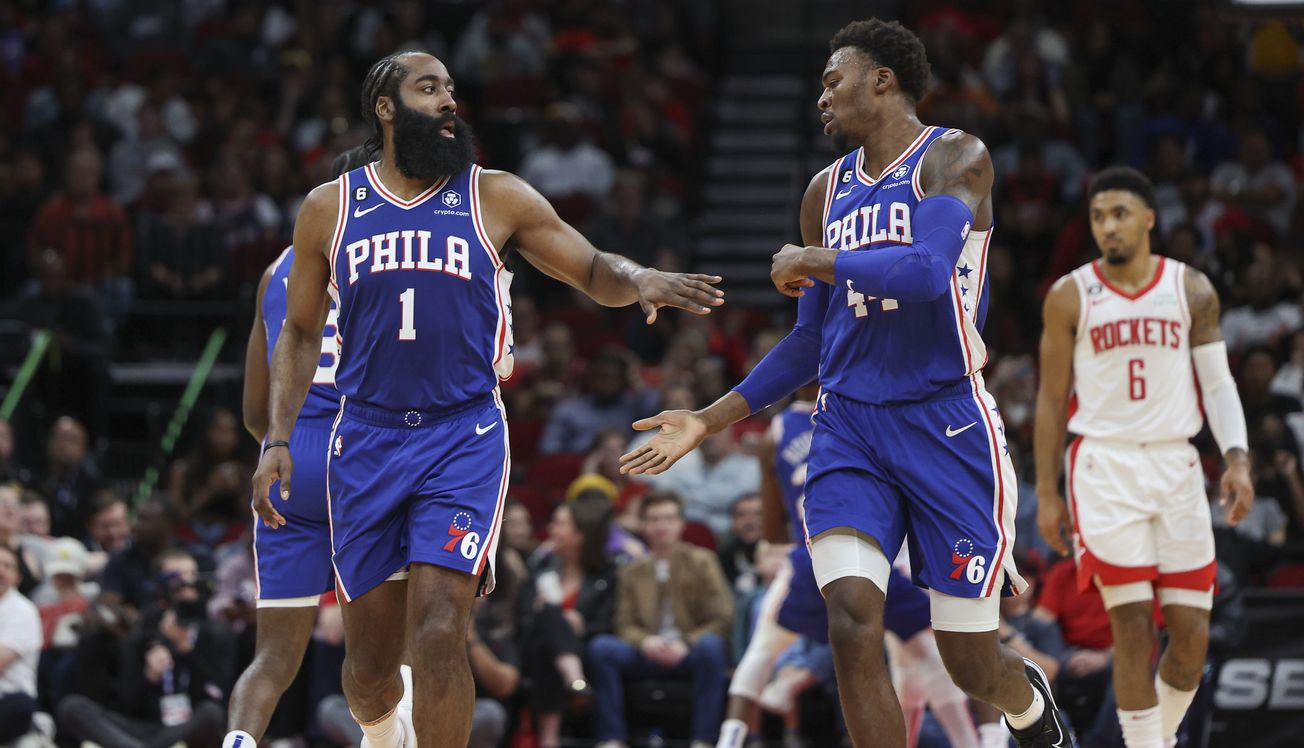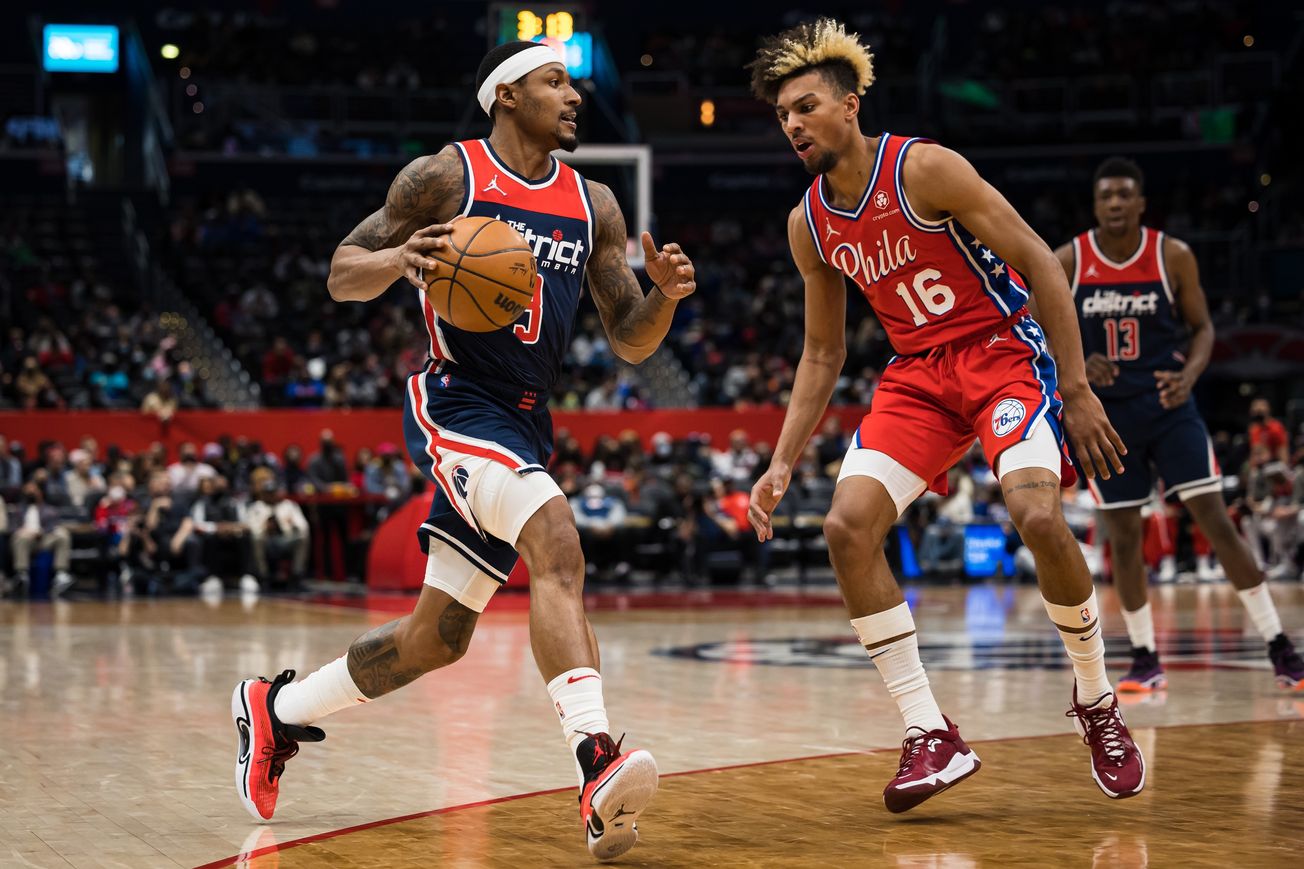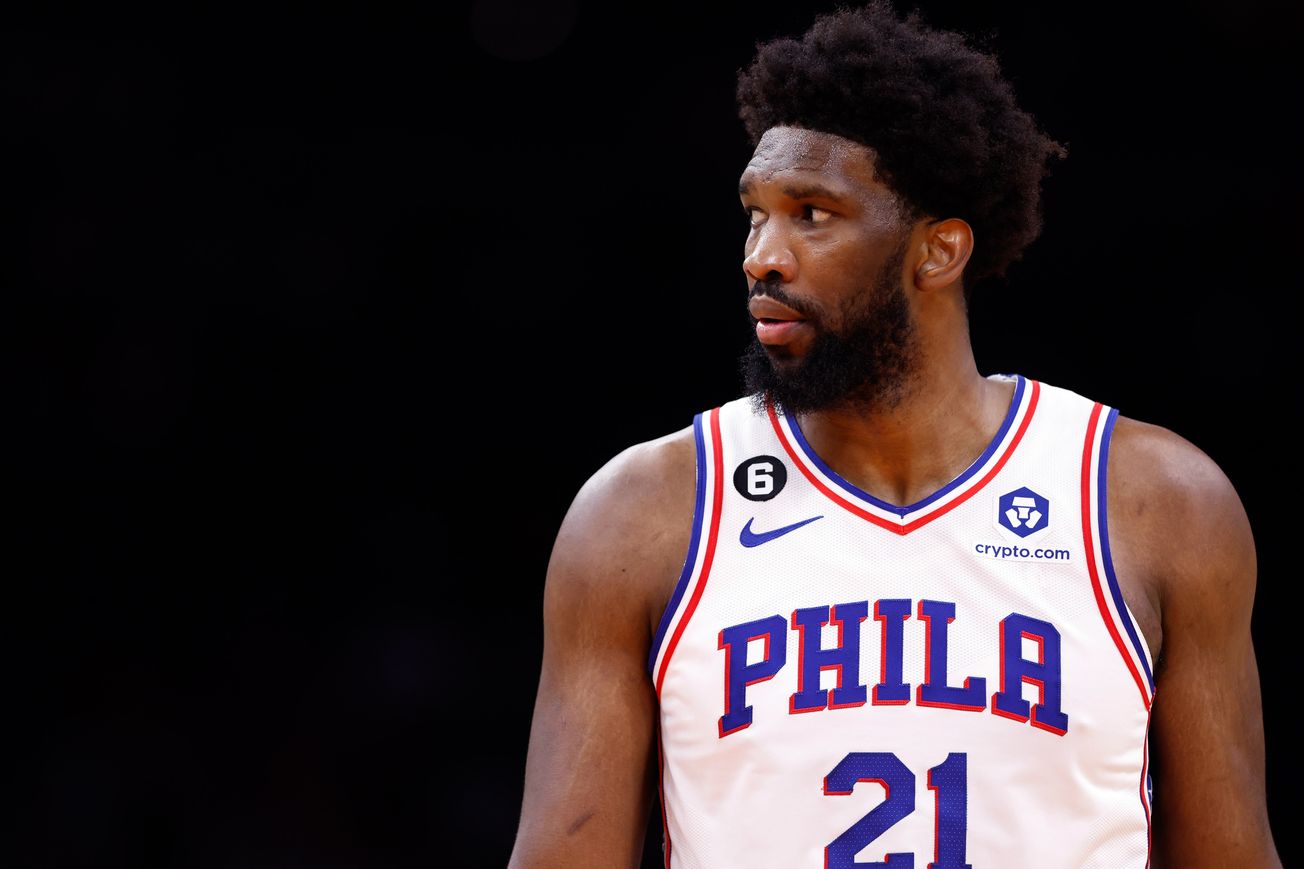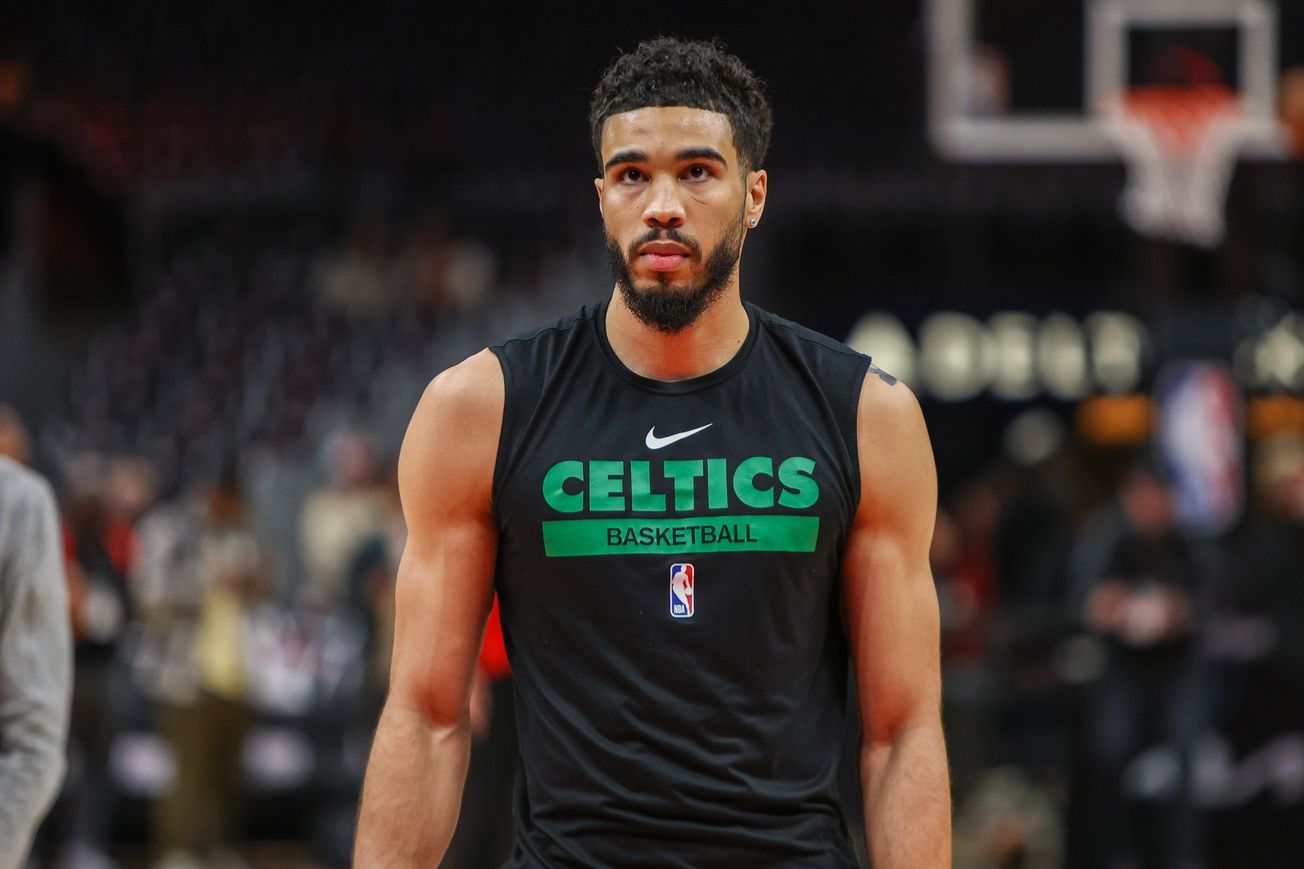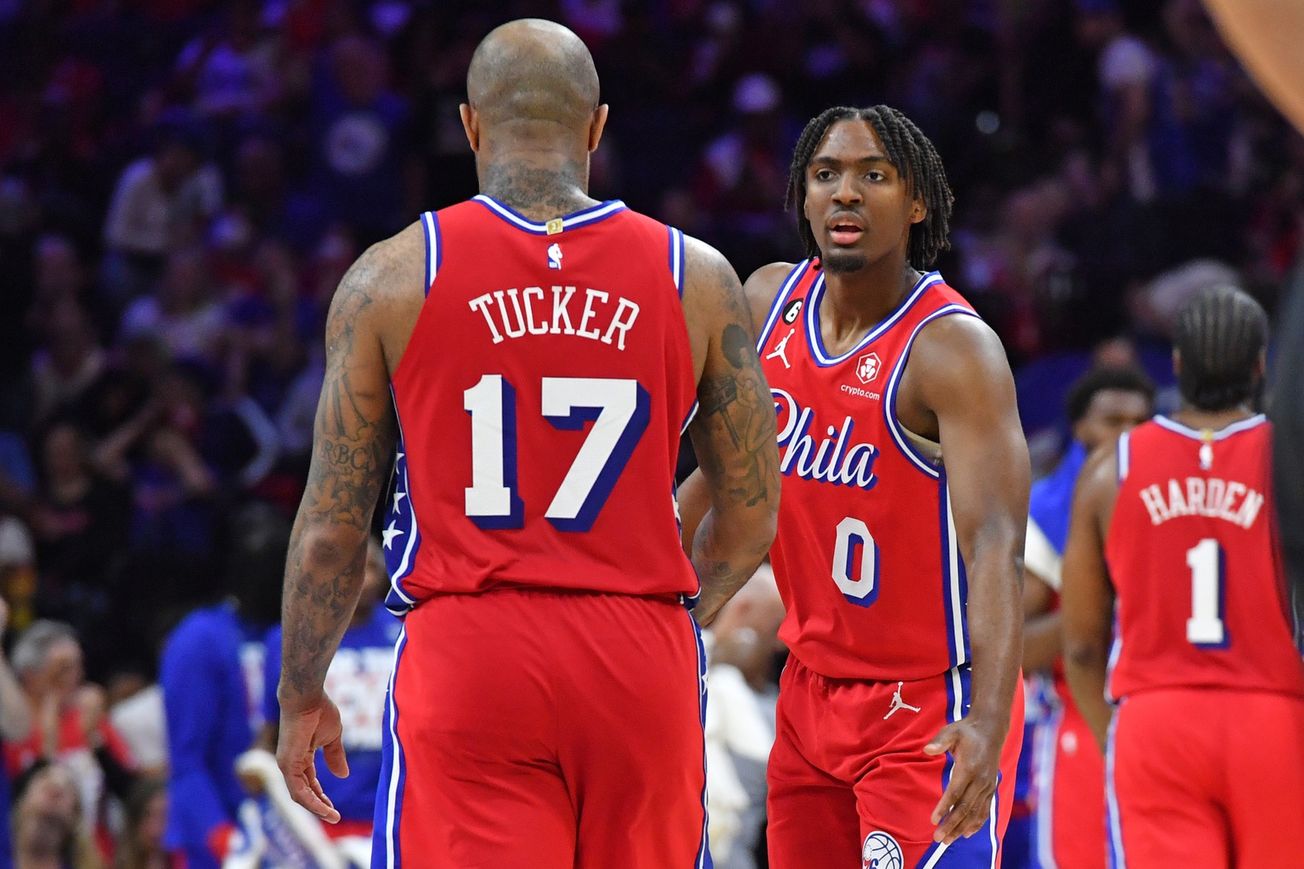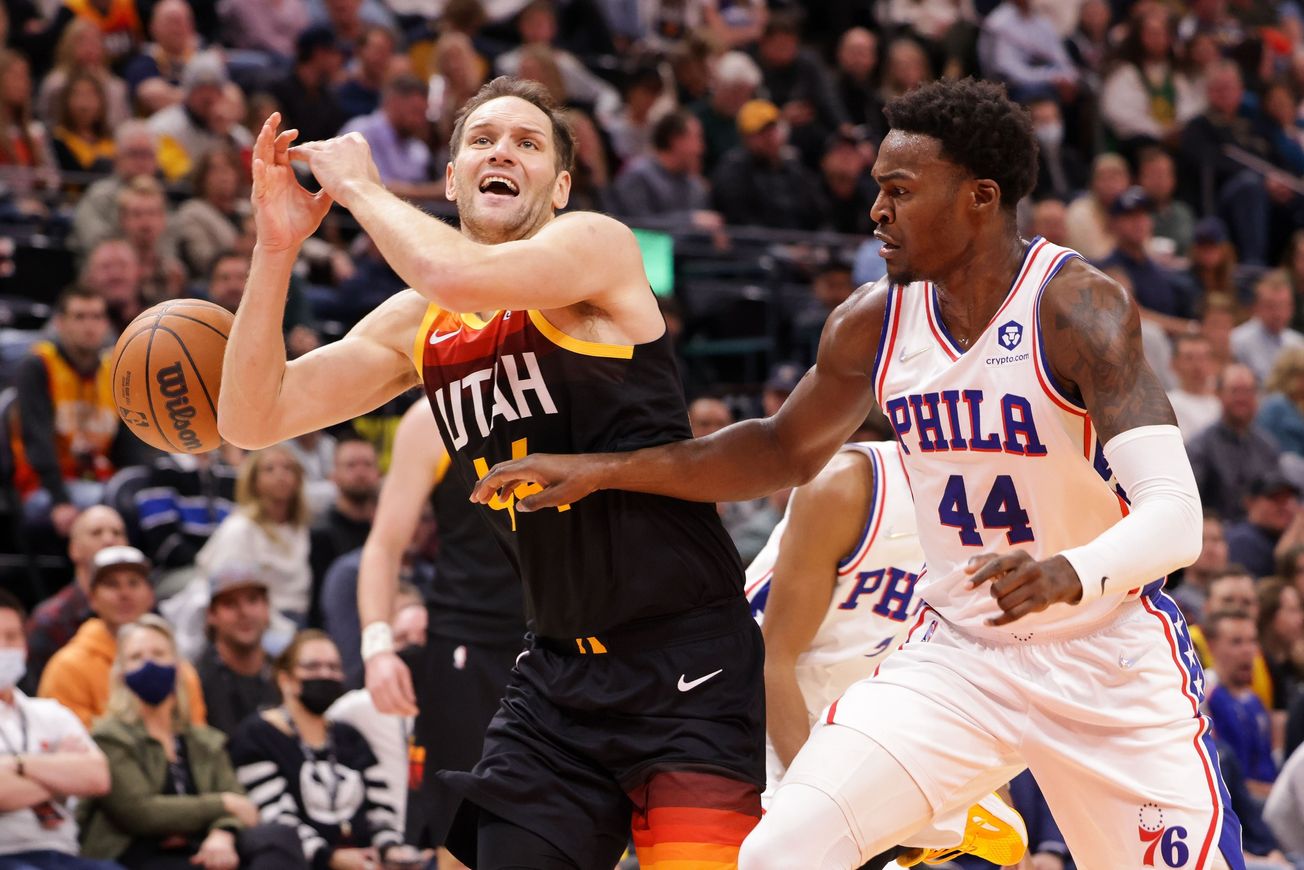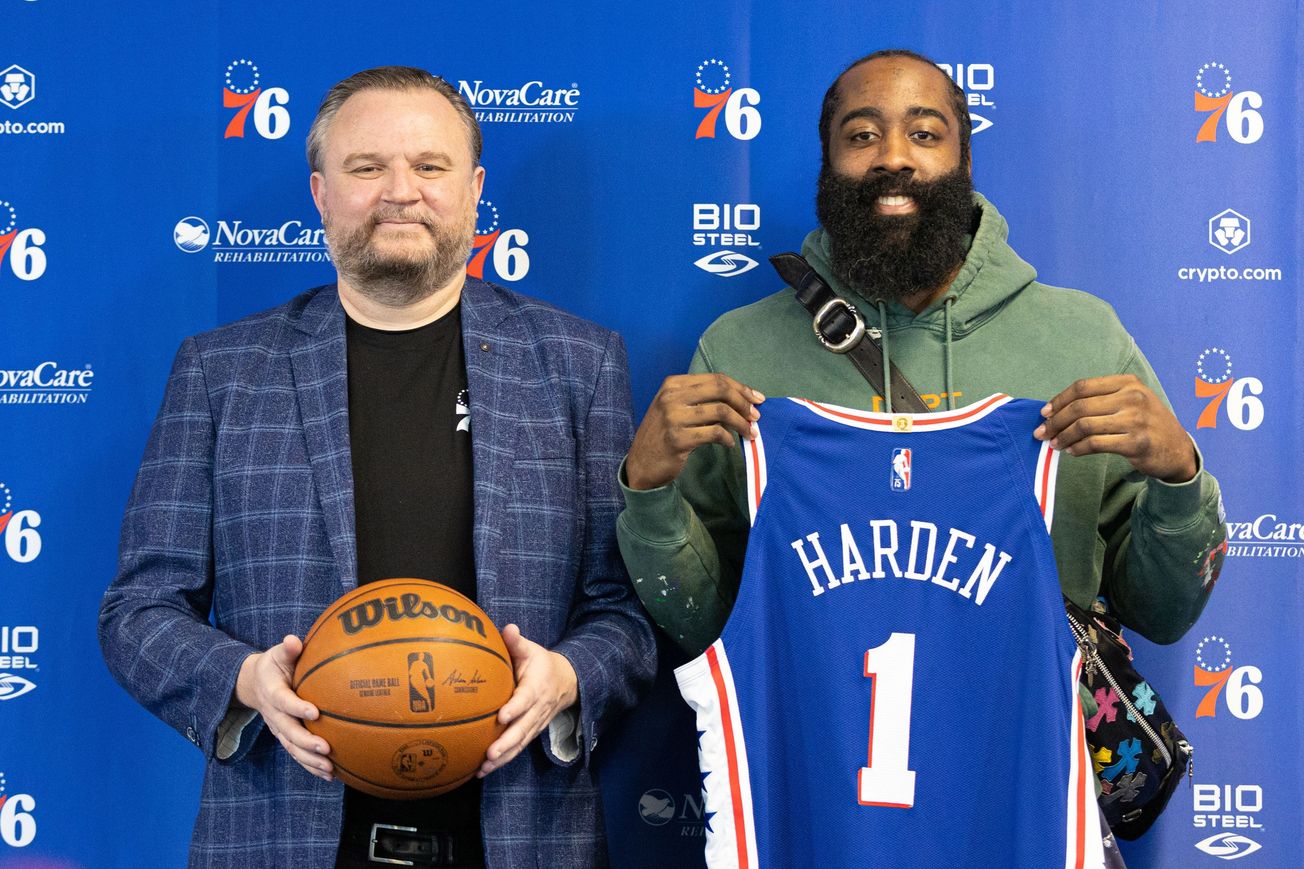The Sixers are humming right along, winners of six straight games, seven of their last eight, and 12 of their last 15, despite playing some of the best competition that the league has to offer.
In fact, since January 25th the Sixers have beaten the Denver Nuggets (#1 seed in the West) and the Milwaukee Bucks (#1 seed in the East), along with the Cavs (#4 seed in the East) twice and Grizzlies (#2 seed in the West), not to mention a slew of other playoff caliber teams. They're coming down the stretch playing the best basketball we've seen them play in a long time.
As such, now is a strange time to bring back a "Likes and Dislikes" column since there's not much to be annoyed by from your Philadelphia 76ers. Still, things are never perfect and there are always areas of the game to clean up, especially in the lead up to a high-stakes playoff run. So let's dive right in to this week's Likes and Dislikes column.
First up, the staggering of Embiid and Harden, and the newfound phenomenon of winning minutes while Joel Embiid sits.
Like: The Harden + bench lineups
Since the Sixers came back from the All-Star break, the lineups with neither Joel Embiid nor James Harden on the floor have all but evaporated.
In fact, in the 10 games since the break the Sixers have played just 55 minutes with neither star on the floor. 20 of those 55 minutes came in the blowout win over the Minnesota Timberwolves, a game that James Harden didn't play in, and where the Sixers needed Embiid for just 28 minutes of play because a good chunk of the second half was spent in garbage time. In fact, in the nine games that both Embiid and Harden have been available for after the break the Sixers have spent a total of just 24 minutes with neither star on the floor.
Those lineups without Embiid and Harden on the floor have been a source of frustration for Sixers fans this season, and understandably so: the Sixers have demolished teams with Embiid and Harden both on the court, have been anywhere from good to very good with one of the two on the floor, and have been borderline disastrous with neither on the court.
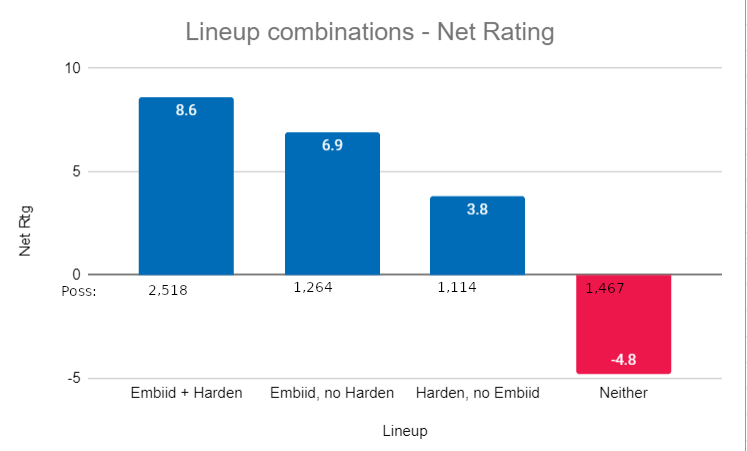
Still, despite all the angst it was always likely that Rivers would limit these minutes come playoff time, for two reasons.
First, Rivers largely cut those lineups out of the rotation last year in the playoffs, when the Sixers had just 59 total possessions with neither Harden or Embiid on the floor, with most of them coming in the two games against the Heat that Embiid missed. It seems as though Rivers learned from his mistakes from the previous season, when the Sixers had 229 possessions (!) with neither Simmons nor Embiid on the floor, and were pummeled to the tune of a -13.2 net rating during that time.
Second, following the February 23rd win over the Grizzlies, when Rivers kept Harden on the floor to start the second and fourth quarters, Rivers said that would be the rotation in the playoffs.
We could have a debate over whether the stars should have been staggered more up to this point in the regular season. How much did those few extra possessions per game help the chemistry between Embiid and Harden? Could they have gotten the same chemistry by staggering just a little bit more to avoid the non-Embiid, non-Harden collapses, and won a few more games? Would the Harden led bench lineups have more chemistry together if they played more in the regular season prior to this recent stretch? All fair questions. Still, Rivers was likely always going to make this tweak in time for the playoffs, and judging by the rotations of late it seems it may have come a few weeks early.
One of the side benefits to Harden being on the floor to start the second and fourth quarters is we get to see Bball Paul placed in an environment that is more conducive to his skill sets, and one which he can succeed in. Before the All-Star break, Reed had played just 24.3% of his minutes alongside of James Harden, per NBAWowy, and the Sixers were destroyed in those minutes, with a -7.1 net rating in minutes that Reed played without Harden.
Part of the reason that Reed was playing so many minutes earlier in the season without Harden on the floor was because of Harden's injury, as by the time Harden returned on December 5th Reed's struggles left him largely out of the rotation. But part of it came down to how the minutes were staggered, with Doc electing to allow Tyrese Maxey and Shake Milton to run the show while Harden rested (with Embiid) to start the 2nd and 4th quarters.
Since the Sixers returned from the All-Star break over 63% of Reed's minutes have come while on the floor with Harden, and Reed has been a much more effective offensive player as a result: averaging 24.6 points per 100 possessions, with a 61.8% true shooting percentage, in the 81 minutes he's played alongside of Harden since the All-Star break. And the Sixers have found success as a team as well, with a +12.3 net rating in those minutes.

Now, this is where we talk about boring stuff like sample size and whatnot. Obviously, 81 minutes of play is not enough to draw meaningful conclusions from. I don't think Paul Reed is going to average nearly 25 points per 100 even if he were playing alongside of prime Magic Johnson or Steve Nash. If the Sixers outscore teams by 12.3 per 100 possessions without Embiid, you can probably start planning the parade. None of that is realistic.
But it makes sense that someone of Reed's archetype – good hands rolling to the rim, quick off his feet if left alone in the dunker spot, and prone to doing too much if you give him the ball 20' from the hoop against a set defense – would excel when playing alongside of a pick-and-roll maestro like Harden. Considering how flawed many of the Sixers' role players are, Harden can help put them in the right spots. The improvement is both logical and meaningful, even if the degree to which he has improved statistically is likely not sustainable.
(One minor point on the second clip in the video below: with Reed switching on the perimeter defensively, and with how quickly he gets down the floor, look at them get into a pick-and-roll just three seconds into the 24 second shot clock! For such a slow team that's refreshing to see every now and then).
I have long maintained that Reed (along with Tucker as the small-ball five) is the backup center that has a chance to at least hold his own in the playoffs, and since the Sixers have come back from the All-Star break the backup center spot has been almost exclusively his.
I'll admit one thing here: I wrote most of this section prior to last night's win over the Cavs, when Reed and the Sixers (-7 in four minutes) struggled mightily in his first-half stint, and Doc elected to go PJ Tucker as the small-ball center after intermission. This is, admittedly, part of the Bball Paul experience. He will be inconsistent, and at times his aggressiveness will get the better of him, leading to bad fouls and bad missed shots rather than deflections and run-outs. He will have nights where he causes chaos for your own team rather than the opposition.
It will be interesting to see how Reed, and Rivers, react to last night's performance. Last night, Rivers made the right call, as on nights when Reed doesn't have it Tucker is the option Rivers should turn to. But if Reed continues to struggle, does Dewayne Dedmon get a crack at the spot? Does Doc do the unthinkable and return to Harrell? This will be a good test to see whether Doc actually any trust in Reed, and whether he can avoid his worst instincts in prioritizing experience over ability.


